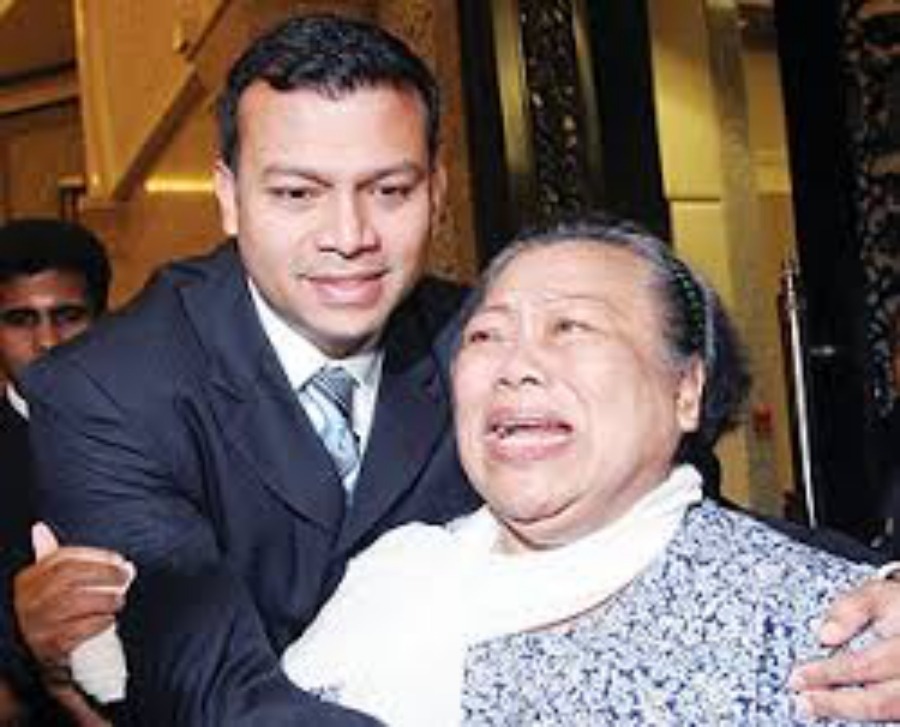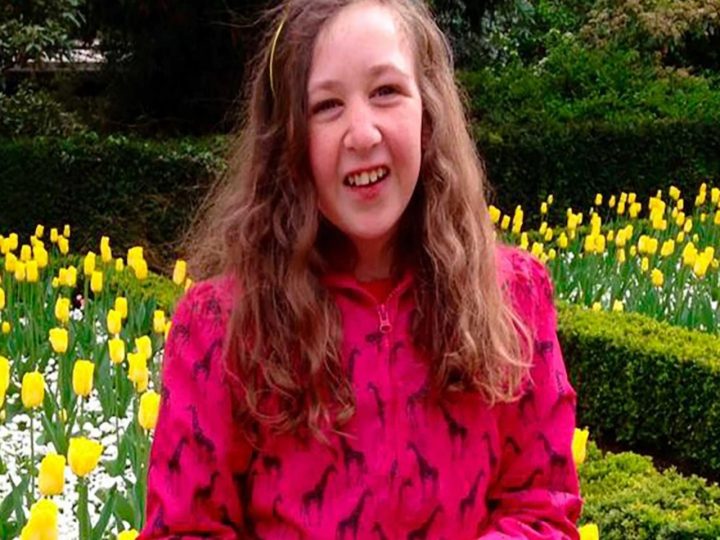Body Odour & A Mystery Man: A Timeline Of Noritta Samsudin’s Perplexing 2003 Murder
 Thirsty for JUICE content? Quench your cravings on our Instagram, TikTok and WhatsApp
Thirsty for JUICE content? Quench your cravings on our Instagram, TikTok and WhatsApp

News of the discovery of a woman’s body on the floor of her bedroom shocked the nation back in 2003.
The deceased, Noritta Samsudin, had her head wrapped in a pillowcase and a face towel in her mouth while her hands and feet were bound with iron wire. She was a 22-year-old model and company executive at the time.
To this day, despite the presence of a main suspect and a timely confession, the case has gone cold.
Here’s a breakdown of what happened, in chronological order:

Noritta was living in a rented house in Sri Hartamas along with her two friends, Kenneth and Azora, who were a couple. On December 5 2003, the pair returned from a night out at around 4.30 a.m., only to find the house in complete darkness.
This was concerning to them as the they had all made a habit of leaving the light on in the dining area every night. Worse still, once Kenneth and Azora entered the home, they were met with a foul smell at the main entrance, which lingered all the way down the corridor.
Kenneth locked the door, and they made their way to the bedroom, leaving the lights off. While he was preoccupied with opening their bedroom door in the dark, Azora could make out the silhouette of a man to her right, but didn’t pay it any mind as she assumed Noritta had company over.
This was because, according to her, the unpleasant scent was consistent with body odour.

Azora asked Kenneth if he noticed a man lurking outside after they entered their bedroom, but Kenneth said no, and shook it off, presuming that Azora was “imagining things.”
Still, Azora made the unnerving decision to leave the bedroom and look for the unknown man. She checked in the kitchen and hallway, to no avail.
Then, to her horror, she realised that the entrance door unlatched – the same one that Kenneth had locked earlier. The couple called out Noritta’s name as their anxiety grew, but there was no response. Kenneth ran downstairs to contact the security personnel as they believed the house had been broken into.
Meanwhile, Azora noticed that Noritta’s room door was slightly ajar. She peeked inside and turned on the lights to find various items scattered about. Azora walked over to the mattress on the floor, and called Noritta’s name once more as she peeled back the comforter – only to find her lying face down.

“Her hands were bound together behind her back with an electrical cord, her legs restrained with a bra and the same wire, while her head was enveloped in a knotted pillowcase. When she was first discovered, the corpse was draped in a comforter, but she was entirely naked,” read an excerpt from the High Court’s judgment.
A terrified Azora then hurried to her bedroom window to alert Kenneth, who was still downstairs at the guardhouse. She saw a man putting on a shirt and heading towards the guardhouse as she was doing this.
She yelled as she suspected he was the same individual she had seen earlier in her home. She hurried down and, with Kenneth and one security officer, looked in vain for the man she had just seen.
Kenneth then requested assistance from the chief security officer. He entered Noritta’s room and removed the pillow case only to find that a bolster case had been tied around her mouth.
He loosened the knot at the back of her head and discovered that her mouth had been gagged with a balled-up face towel. She could not be resuscitated and the police were contacted. They confirmed that Noritta was dead shortly after.

During the early days of the investigation, numerous speculations surrounded the case, mostly assuming that Noritta had been the victim of rape, if not some kind of sexual role play blunder.
However, claims of a mere bedroom activity gone awry were improbable as the towel was shoved into her mouth “forcefully enough to cause her tongue to collapse and potentially block her airway.”
Among the pieces of evidence that were collected from the scene were 3 different seminal samples from the mattress, 11 pieces of tissue paper with semen stains from the waste paper basket and all the items that were used to bind and gag Noritta.

A few DNA samples were found as a result. Some were Noritta’s, and the rest came from two separate men. One of which was Hanif Basree Abdul Rahman, a 36-year-old city council engineer.
He had reportedly surrendered himself to the police as a suspect, and was then formally charged with Noritta’s murder in court, under Section 302 of the Penal Code for murder, and put on trial. If found guilty, he could have been sentenced to death.
Due to a lack of substantial evidence indicating Hanif’s involvement in the murder, the case did not see its end.
The Deputy Public Prosecutor told the court that Hanif had shaved his pubic hair and cut his nails before to turning himself in, demonstrating that Hanif attempted to remove any additional evidence that could connect him to Noritta. It was also alleged that Hanif had questioned whether the court would be able to link him to the murder based on the DNA evidence.

Besides Noritta’s housemates, the prosecution also called in the security guards as witnesses, who further testified that Hanif was a frequent visitor to the unit and would typically enter with Noritta at around 2 a.m.
According to statements by the security guards, Hanif purportedly visited the condominium on the day of the occurrence before 1 a.m., and afterwards, they observed him and Noritta conversing with two Malay couples in a Kancil outside the condominium complex.
He did not leave the apartment in their absence. It was unlikely that they had not spotted him departing the scene as Hanif was a man of nearly 6 feet and could easily be distinguished from other guests.
Meanwhile, the prosecution tried to make sense of the situation – namely carving out a motive, the facts in issue, relevant information and the actual intention of causing death on Hanif’s part.

This is the point where the court grew torn in its judgement, straddled by the contrast of direct and circumstantial evidence – one of which could serve as proof for a conviction, while the latter merely welcomed such an inference.
The testimonies of the guards simply demonstrated that Hanif was present in the condominium during the murder, not that he truly committed the crime. This is therefore circumstantial.
Hanif confessed that he and Noritta had sexual relations and that he had last seen her the day prior to the murder. The DNA evidence also indicated that Hanif had intercourse with Noritta before she died, but it did not prove that he was the last person to do so – another count of circumstantial evidence.
Additionally, the court learned that the security guards provided various statements to the police and altered their stories a few occasions. In their original statements, they claimed that they had seen Hanif at the residence, but that was the day preceding the murder.
They also attempted to assert that they had been in a “panic mode” and couldn’t recall what had transpired, but the court noticed that their accounts of what Hanif and Noritta were wearing were inconsistent.

“Their performances can only be concluded as one abhorrent harmonious lie on this crucial aspect of the evidence, which must be absolutely rejected,” noted the court.
Azora and Kenneth also indirectly shut down claims of Hanif’s culpability by stating that they were quite close with him and had never associated him with any form of body odour, much less one that pungent. Azora further affirmed that the person she saw had a darker skin tone than Hanif’s.
There was also the question of the other unknown male’s DNA. The court found that Noritta’s arms and legs were tied after she died and his DNA alone was discovered on the electrical cord and bra. This placed him as the new main suspect in the case.

Conclusively, Hanif was acquitted from the murder charge based on a lack of direct proof from the prosecution. The Federal Court also unanimously dismissed the prosecution’s appeal against his acquittal.
The unknown male has not been found nor identified to this day.
The only solid indication that hovers over the case is that there were no signs of a break in nor signs of struggle from Noritta, suggesting that she may have known her murderer personally.


 Get Audio+
Get Audio+ Hot FM
Hot FM Kool 101
Kool 101 Eight FM
Eight FM Fly FM
Fly FM Molek FM
Molek FM

